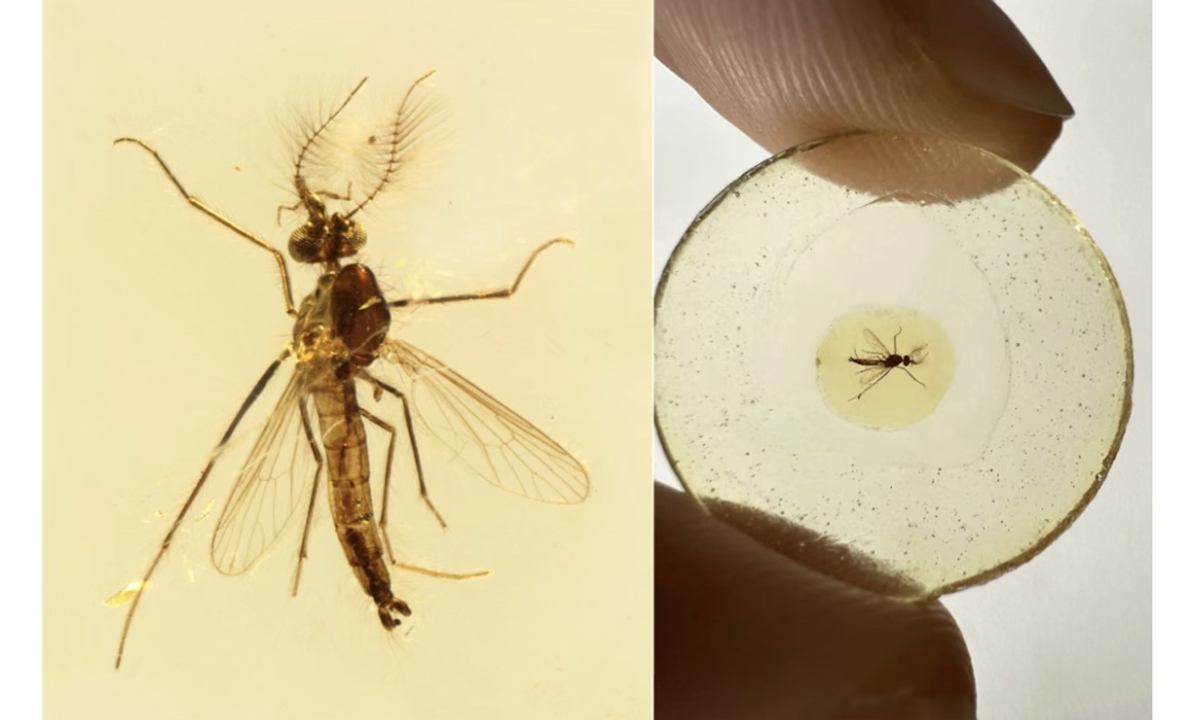
A 130-million-year-old male mosquito trapped in a Lebanese amber. Photo: Screenshot from online
A research team of the Nanjing Institute of Geology and Palaeontology, Chinese Academy of Sciences, have found a 130-million-year-old mosquito trapped in a Lebanese amber.
For those in the know, the female mosquitoes are the leeching insects. However, this discovery indicates that the male mosquitoes were also once the leeching insects during the early stages in the evolution of the Culicidae family.
The evolution process of the behavior of insects leeching is hard to research while the existing Culicidae family have exceeded more than 3,000 kinds of mosquitoes and researchers have less knowledge about their origin and earliest evolution, "Partly due to the gaps in the fossil insect record," noted Dany Azar, a leading Lebanese researcher of the Nanjing Institute of Geology and Palaeontology.
Azar studied and collected fossils from more than 500 Lebanese amber sites.
"Early Cretaceusperiod Lebanese amber preserves the oldest known amber biota and the results of this research come from two of these pieces of amber that preserve mosquitoes," he said.
Azar emphasized that these two male mosquitoes date back to 130 million years ago. which means the fossil records of mosquitoes have been advanced by nearly 30 million years.
Researchers of the team observed through advanced scientific instruments such as a laser confocal microscope and a fluorescence microscope of the institute that in both male mosquitoes remain the distinctive piercing-sucking mouthparts - a sharp, triangular jaw and extended denticles.
The existing female mosquitoes have piercing-sucking mouthparts for leeching blood, while male mosquitoes with degraded mouthparts mostly leech flower dew," Azar said, adding that, based on the discovery of male mosquitoes piercing-sucking mouthparts, it can be deduced that 130 million years ago male mosquitoes were also bloodsucking insects.
Besides of Dany Azar, A. Nel, a professor at the French National Museum of Natural History, Huang Diying, a researcher of Nanjing Institute of Geology and Palaeontology, and M. Engel, a professor at the American Museum of Natural History, also participated the research.
The related research findings have been published online in the prominent journals
CurrentBiology.
Global Times




